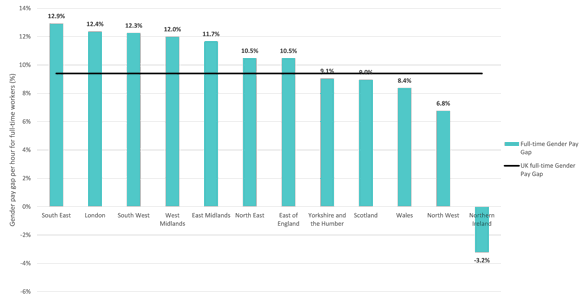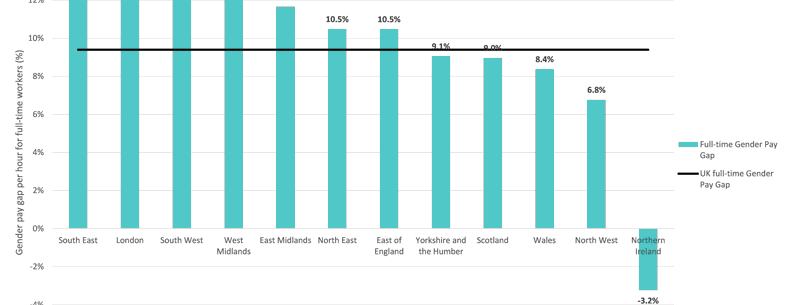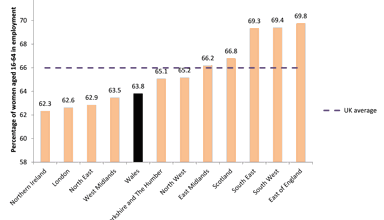Article by Gareth Thomas, National Assembly for Wales Research Service
The Assembly will be debating how the Welsh Government should act to promote fuller economic participation by women on 10 June. What is the current position of women in the Welsh economy, and what can be done to maximise the contribution of women to the Welsh economy in the future? What is the current position of women in the Welsh workplace? According to the most recent data from the Office for National Statistics (ONS) 67% of women aged 16-64 in Wales are in work, fewer than the 72% of men in work. Women are three times more likely to work part-time than men, 44% of women worked part-time in Wales in 2014, compared to 14% of men. This contributes towards more women than men earning less than the living wage, figures show that in 2014 29% of women earned under the living wage compared to 19% of men in Wales. This is in part caused by the greater proportion of women working part-time than men, 43% of women working part-time earned below the living wage in Wales. The gender pay gap in Wales is lower than the UK average. Using the headline ONS measure, as can be seen in figure 1, the gender pay gap for full-time workers in Wales was 8.4% in 2014, lower than the UK figure of 9.4%. However, the gender pay gap for all workers in Wales was considerably higher at 16.2%, although again this was lower than the UK figure of 19.1%. Figure 1: Gender pay gap for full-time workers in devolved nations and English regions in 2014 [caption id="" align="alignnone" width="682"]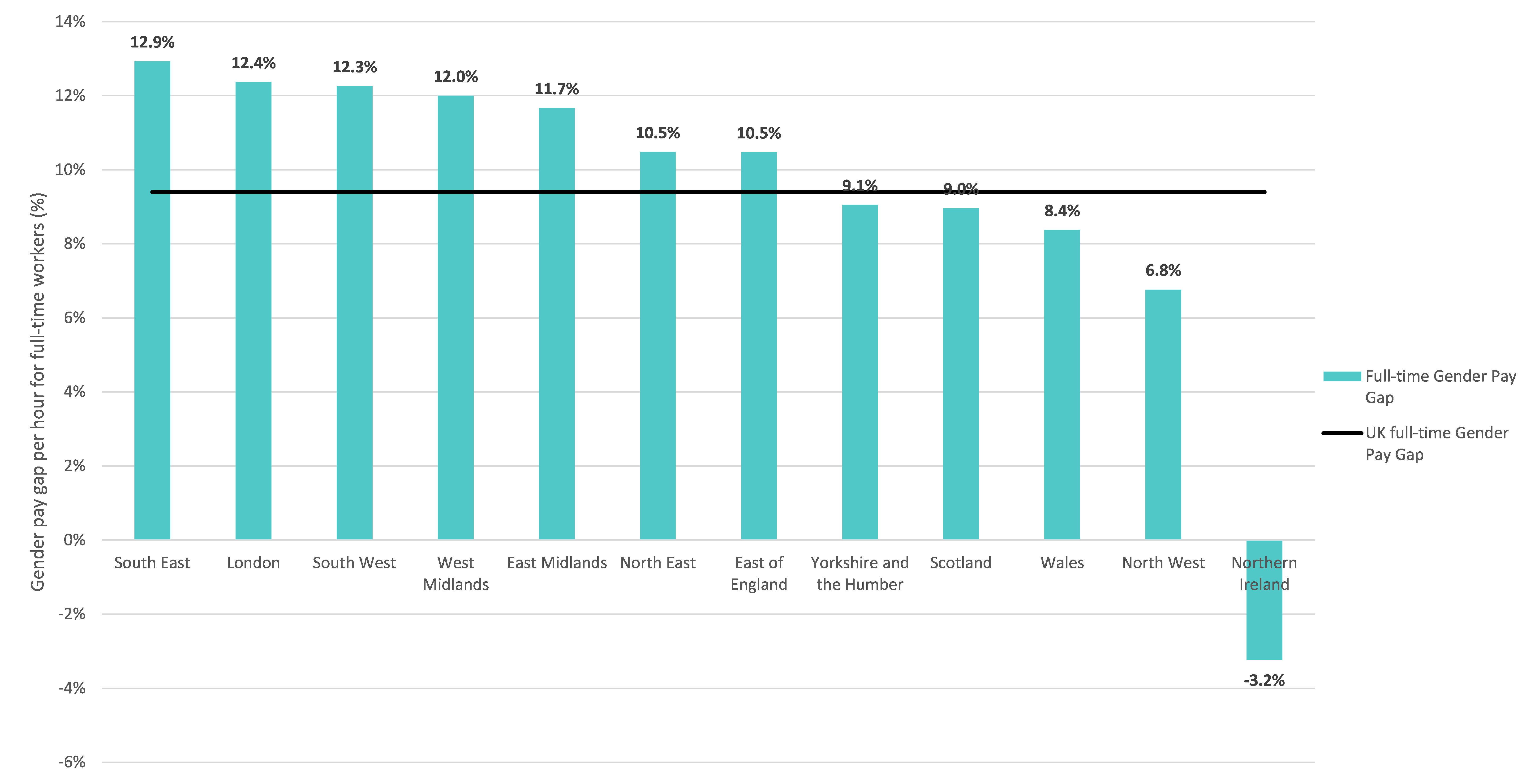 Source: Office for National Statistics, Annual Survey of Hours and Earnings, 2014 (table 5.6a)[/caption] Occupational mapping work by the Women Adding Value to the Economy (WAVE) project concluded that women’s employment is concentrated in low-paid areas of the economy. This occupational divide extends to the Welsh Government’s priority sectors. The latest statistics on the Welsh Government’s 9 priority sectors for supporting investment show that just 28% of women were employed in a priority sector in 2013, compared to 56% of men. The implication of this is that the sectors that many women work in are not those which the Welsh Government sees as the priorities for investing in. Figure 2: Percentage of people employed in priority sectors that are women in 2013 [caption id="" align="alignnone" width="682"]
Source: Office for National Statistics, Annual Survey of Hours and Earnings, 2014 (table 5.6a)[/caption] Occupational mapping work by the Women Adding Value to the Economy (WAVE) project concluded that women’s employment is concentrated in low-paid areas of the economy. This occupational divide extends to the Welsh Government’s priority sectors. The latest statistics on the Welsh Government’s 9 priority sectors for supporting investment show that just 28% of women were employed in a priority sector in 2013, compared to 56% of men. The implication of this is that the sectors that many women work in are not those which the Welsh Government sees as the priorities for investing in. Figure 2: Percentage of people employed in priority sectors that are women in 2013 [caption id="" align="alignnone" width="682"]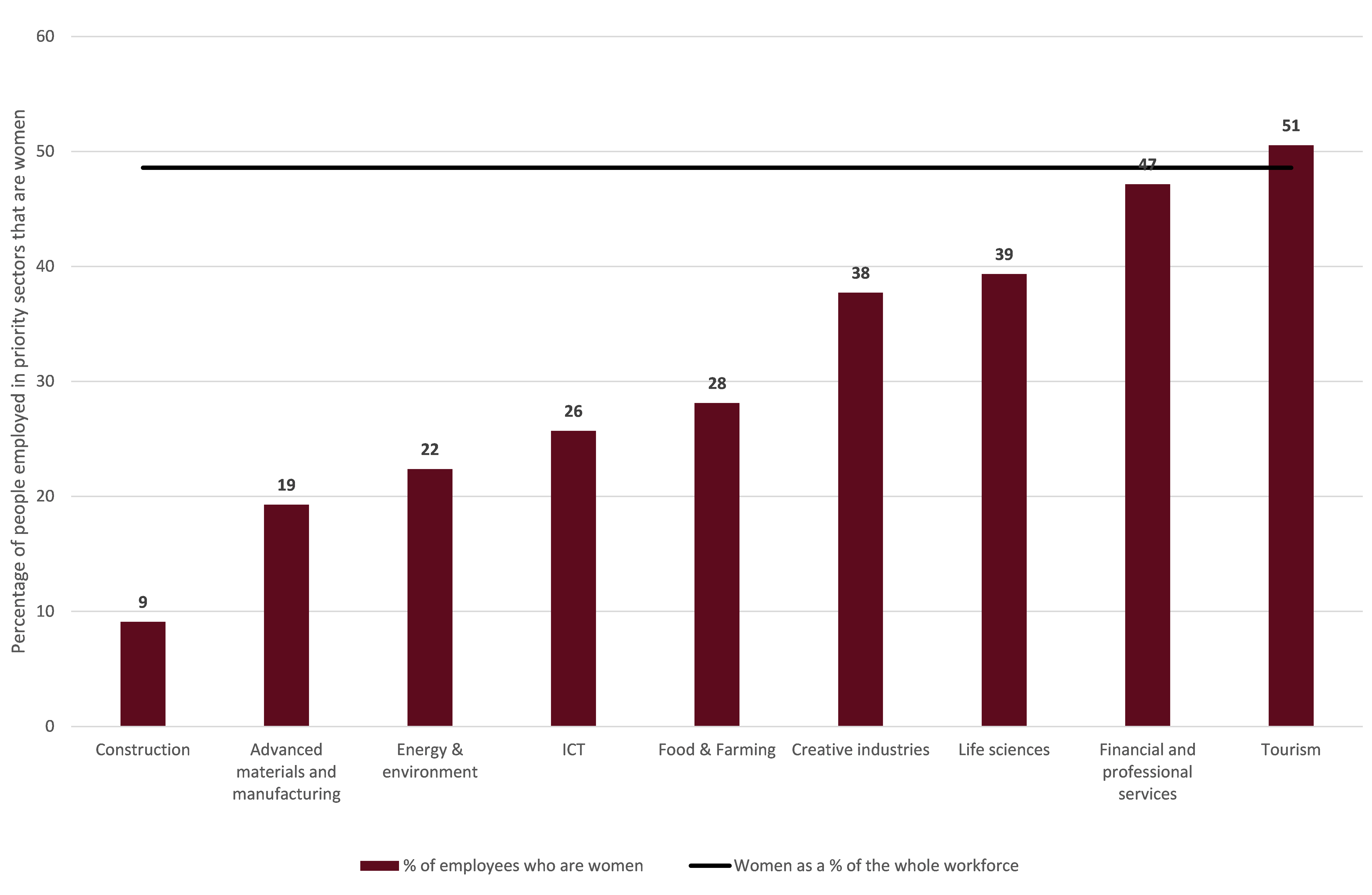 Source: Welsh Government, Priority Sector Statistics 2014 (table 3.6)[/caption] What is the situation for women who run their own business? One of the driving factors behind increased employment levels since the economic downturn is self-employment. In Wales, while the 58,400 self-employed women are still less than a third of all people in self-employment, the gender gap has been closing over recent years. There has been a 22% rise in the number of women who are self-employed over the past five years, compared to a 7% rise for men. In terms of starting-up and owning businesses, Chwarae Teg state that women in the UK are still half as likely as men to set up their own business. The Women’s Business Council set up by the previous UK Government found that 19% of SMEs across the UK were majority-run by women. Looking at the future businesses of Wales, the latest Global Entrepreneurship Monitor statistics for Wales from 2013 show that 4.2% of working-age women were engaged in early-stage entrepreneurial activity, compared to 6.5% of men. In terms of people in Wales expecting to start a business in the next three years, 3.1% of working-age women and 4.7% of men stated that they expected to do so. In terms of providing support and role models for women who are starting or own businesses, the Equalities and Human Rights Commission recently found that women were under-represented on the Government-appointed boards of the Welsh Enterprise Zones. What could be done to help women to meet workplace challenges? In terms of potential ways to maximise the economic contribution of Welsh women, Chwarae Teg identify five areas where action is required by a variety of stakeholders including both Welsh and UK Governments:
Source: Welsh Government, Priority Sector Statistics 2014 (table 3.6)[/caption] What is the situation for women who run their own business? One of the driving factors behind increased employment levels since the economic downturn is self-employment. In Wales, while the 58,400 self-employed women are still less than a third of all people in self-employment, the gender gap has been closing over recent years. There has been a 22% rise in the number of women who are self-employed over the past five years, compared to a 7% rise for men. In terms of starting-up and owning businesses, Chwarae Teg state that women in the UK are still half as likely as men to set up their own business. The Women’s Business Council set up by the previous UK Government found that 19% of SMEs across the UK were majority-run by women. Looking at the future businesses of Wales, the latest Global Entrepreneurship Monitor statistics for Wales from 2013 show that 4.2% of working-age women were engaged in early-stage entrepreneurial activity, compared to 6.5% of men. In terms of people in Wales expecting to start a business in the next three years, 3.1% of working-age women and 4.7% of men stated that they expected to do so. In terms of providing support and role models for women who are starting or own businesses, the Equalities and Human Rights Commission recently found that women were under-represented on the Government-appointed boards of the Welsh Enterprise Zones. What could be done to help women to meet workplace challenges? In terms of potential ways to maximise the economic contribution of Welsh women, Chwarae Teg identify five areas where action is required by a variety of stakeholders including both Welsh and UK Governments:
- Tackling low pay and underemployment;
- Encouraging women to work in non-traditional sectors;
- Increasing the number of women in leadership positions;
- Supporting female entrepreneurs; and
- Addressing differential care responsibilities faced by women and men
In a Plenary debate in January 2015, Lesley Griffiths AM, the Minister for Communities and Tackling Poverty set out how the Welsh Government is working to address gender inequalities in the workplace. She stated that:
Our strategic equality plan also contains the actions we are taking to help women and girls to access, to achieve and to aspire within education, training and employment. It sets out what we are doing to tackle gender stereotyping, to enable women to access the careers of their choice, and to increase diversity in public life by challenging and changing the status quo.
Organisations such as the WAVE project and Chwarae Teg that support the increased involvement of women in the workplace, the priority sectors, and in running their own businesses have received European and Welsh Government funding. The Welsh Government also funded work by the Bevan Foundation to examine the impact of the economic downturn on women in the workplace. The Assembly’s Communities, Equality and Local Government Committee has also been looking at workplace issues facing women, and how they contribute to higher levels of poverty amongst women as part of its wide-ranging inquiry into Poverty.




